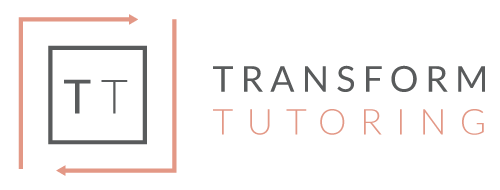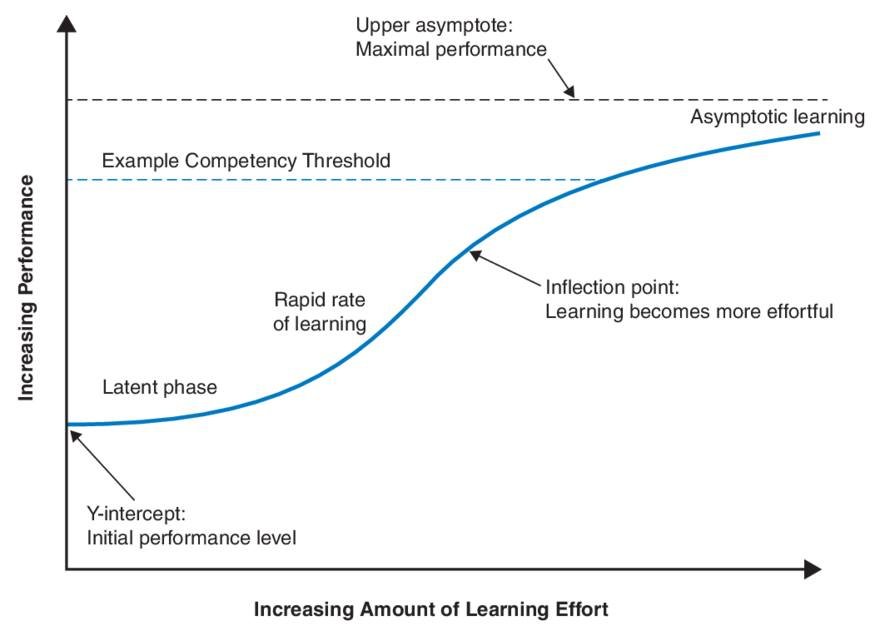When it comes to the road to reaching a student’s “best test” it’s worth understanding what different score trajectories look like and what goes into reaching plateaus. It is my job as a coach to help discover - is this a ceiling or a step? Score plateaus vary amongst students based on a variety of factors such as effort, skill-set (reading comprehension, problem solving), processing speed, content knowledge, and emotional command on test day. It’s important to factor in a student’s cognitive maturity (year in school) and their attitude toward the pursuit of a higher score (growth mindset) when determining score potential. It’s also wise to consider where breakthroughs are likely to occur: reading is harder due to vocabulary/comprehension limitations, whereas math/grammar are easier to attack via continued consistent practice.
Below is an image shared from Mike Bergin - President of Chariot Learning. It provides an illustration of how learning effort translates to increasing performance and how eventually it can level off. You’ll notice initial efforts create a rapid improvement (for example a 25 student improving to a 28 on the ACT), however there is a sort of tipping point that is necessary to break through (via effort or otherwise) in order for that same student to reach a 30 plus score.
The scenario mentioned above is only one example of what a score trajectory can look like. So here is a collection of other scenarios to shed even more light on the ceilings versus the steps.
Archetypes and Plateaus:
(Note: The average improvement for students training for 6-8 weeks is roughly 3-4 points on the ACT. )
Student A ( Increase from 20-27/28 on the ACT ) - There are usually two styles in this profile:
A student who likely isn’t maximizing their problem solving and comprehension skill because they have limited content mastery and haven’t realized how to take advantage of their talents. Their competency level is high, so through continued learning efforts and practice they can approach a higher ceiling.
A student who is average to above average in skill/competency and is committed to going above what’s asked with the commitment to improvement necessary to see such a high jump.
Student B ( Increase from 20-23/24 on the ACT ) - This profile also tends to take to forms:
A student who, despite having nearly straight As and adequate content knowledge, is more limited in their problem solving and comprehension skill than they’re aware of - leading to difficulty breaking through the 24 range.
A relatively average to above average student in skill/competency that quite frankly isn’t willing to go beyond the minimum effort required to prepare for the exam.
Student C ( Increase from 25-30+ on the ACT ) - At this range you tend to see two paths:
A potential 30+ range scorer possessing all of the skill necessary to test well, but they don’t have a good feel for how to attack the test and need to polish content learned but forgotten.
An above average student in terms of skill set, but is incredibly dedicated to reaching the coveted 30 score. This student will work very hard on the details of the test and study at a level very few high school students would even consider.
Student D ( Increase from 25-28 on the ACT ) - The two commons situations:
A maximum 27-28 scorer who tends to be limited in the comprehension, problem solving, and processing speed necessary to be very strong across all sections. Even with a very respectable effort, this student will likely not break through this plateau.
A student who, with the effort they’re capable of, should be able to reach the 30 range but isn’t committed enough to the process to get there despite having no skill deficits.
Do the characteristics of these archetypes apply to all students scoring at those levels perfectly? No. However, they do an effective job of categorizing a student to better understand how learning effort and skill set translate to score trajectories and realistic outcomes.


